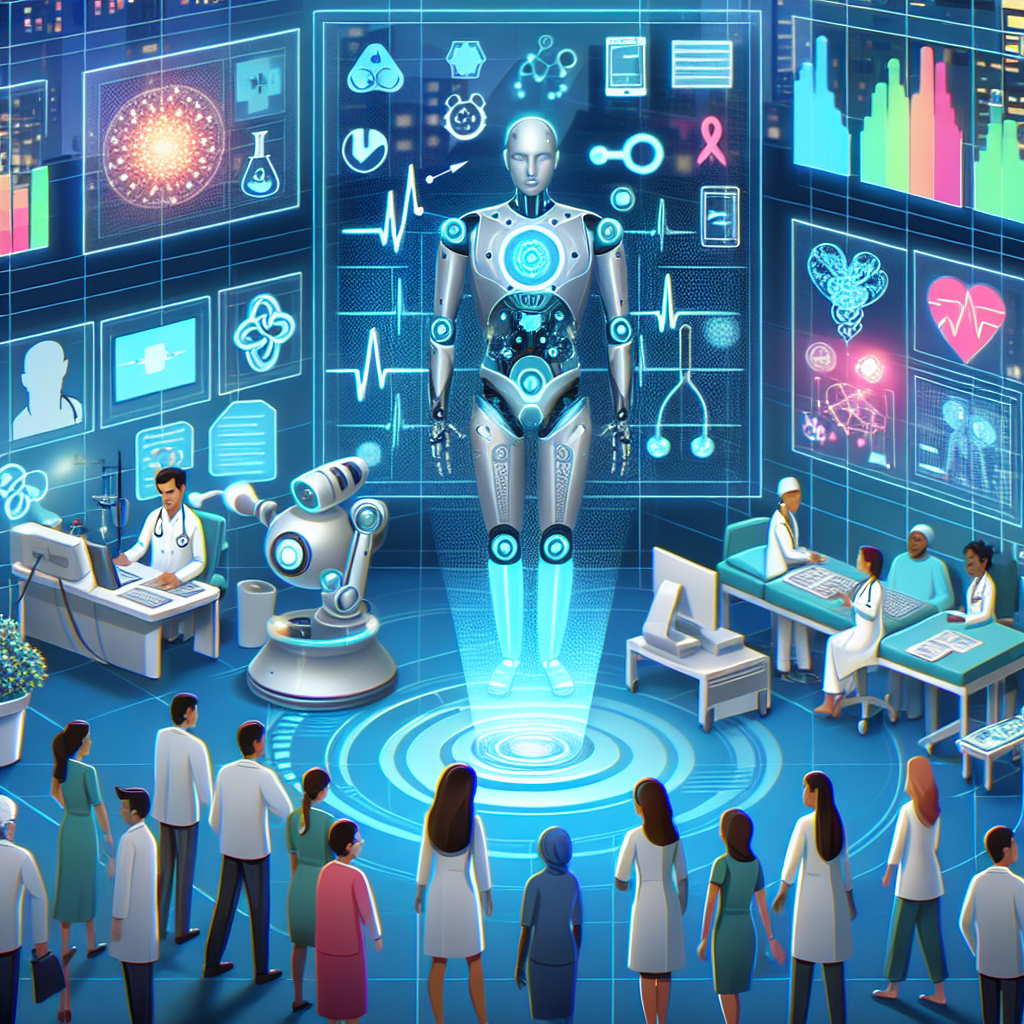AI in Healthcare: Addressing Health Disparities
Artificial Intelligence (AI) has become an increasingly important tool in the healthcare industry, with the potential to revolutionize the way we diagnose, treat, and prevent diseases. One of the most promising applications of AI in healthcare is its ability to address health disparities, or the differences in health outcomes between different populations.
Health disparities are a significant issue in healthcare, with certain populations facing higher rates of disease, worse health outcomes, and barriers to accessing quality care. These disparities can be due to a variety of factors, including socioeconomic status, race, ethnicity, gender, and geography. AI has the potential to help bridge these gaps and ensure that all individuals have access to high-quality, personalized healthcare.
One of the ways AI is being used to address health disparities is through predictive analytics. By analyzing large amounts of data from electronic health records, medical imaging, and other sources, AI algorithms can identify patterns and trends that may not be apparent to human clinicians. This can help healthcare providers predict which patients are at risk for certain diseases or health conditions, allowing for earlier intervention and more targeted treatments.
For example, AI algorithms can analyze a patient’s medical history, genetic information, and lifestyle factors to identify individuals who are at high risk for developing diabetes. This information can then be used to implement preventive measures, such as lifestyle changes or medication, to help prevent the onset of the disease. By identifying at-risk individuals early on, AI can help reduce the burden of chronic diseases and improve health outcomes for vulnerable populations.
AI can also help improve access to healthcare for underserved populations. In many rural and low-income areas, access to healthcare services is limited, leading to higher rates of preventable diseases and poorer health outcomes. AI-powered telemedicine platforms can help bridge this gap by providing virtual consultations with healthcare providers, allowing patients to receive care from the comfort of their own homes. This can help improve access to care for individuals who may not have the means to travel to a traditional healthcare facility.
Additionally, AI can help reduce bias in healthcare decision-making. Studies have shown that human clinicians may exhibit unconscious biases based on race, gender, or other factors, which can lead to disparities in treatment. AI algorithms, on the other hand, can make decisions based on data and evidence, rather than subjective factors. This can help ensure that all patients receive fair and equitable treatment, regardless of their background.
Despite these promising applications, there are still challenges to overcome in implementing AI in healthcare to address health disparities. One of the main challenges is ensuring the privacy and security of patient data. AI algorithms rely on large amounts of data to make accurate predictions, but this data must be protected to prevent unauthorized access or breaches. Healthcare organizations must implement robust security measures to safeguard patient information and comply with data privacy regulations.
Another challenge is ensuring that AI algorithms are accurate and unbiased. Bias can be inadvertently introduced into AI algorithms through the data used to train them, leading to inaccurate predictions or skewed outcomes. Healthcare organizations must carefully evaluate the data used to train AI algorithms and ensure that it is representative of the diverse populations they serve. Additionally, ongoing monitoring and evaluation of AI algorithms are necessary to identify and correct any biases that may arise.
Despite these challenges, the potential benefits of AI in healthcare are substantial. By harnessing the power of AI to address health disparities, we can improve health outcomes for all individuals, regardless of their background or circumstances. As AI technology continues to advance, we can expect to see even greater strides in reducing health inequities and ensuring that everyone has access to high-quality, personalized healthcare.
FAQs:
Q: How is AI used in healthcare to address health disparities?
A: AI is used in healthcare to analyze large amounts of data and identify patterns and trends that may not be apparent to human clinicians. This can help predict which patients are at risk for certain diseases, improve access to care for underserved populations, and reduce bias in healthcare decision-making.
Q: What are the challenges in implementing AI in healthcare to address health disparities?
A: Challenges in implementing AI in healthcare include ensuring the privacy and security of patient data, addressing bias in AI algorithms, and ensuring that AI algorithms are accurate and unbiased. Healthcare organizations must implement robust security measures, carefully evaluate data used to train AI algorithms, and monitor and evaluate algorithms to identify and correct biases.
Q: What are the potential benefits of AI in healthcare for addressing health disparities?
A: The potential benefits of AI in healthcare for addressing health disparities include improving health outcomes for all individuals, regardless of their background or circumstances. By harnessing the power of AI, we can reduce health inequities and ensure that everyone has access to high-quality, personalized healthcare.

